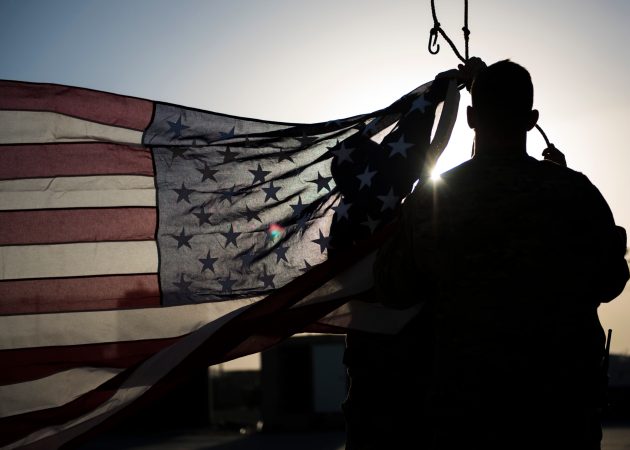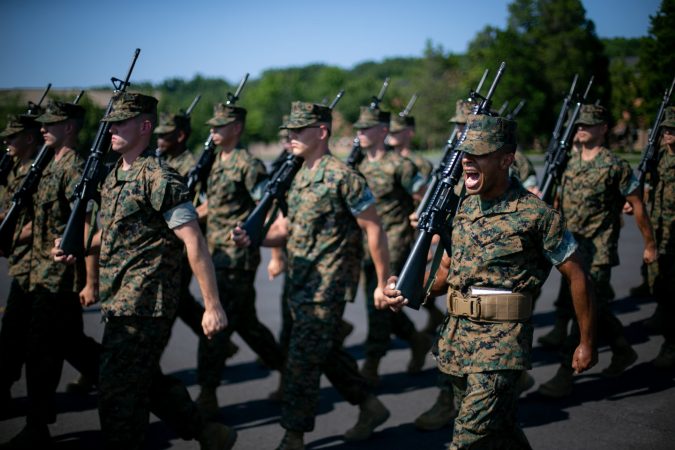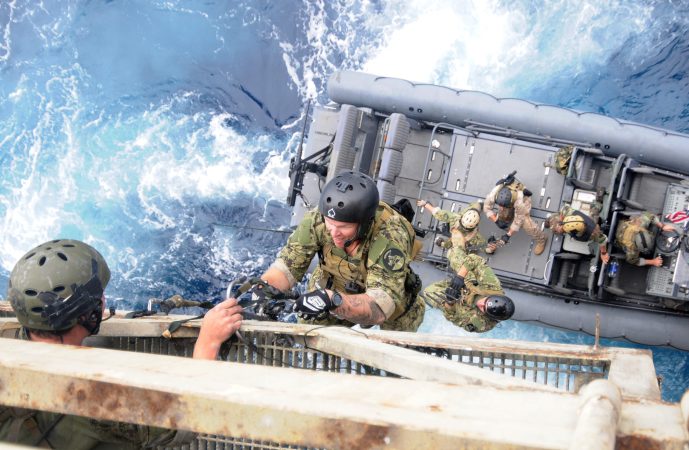In real military life, we’ve got the rules of engagement (ROEs). These aren’t just suggestions or friendly reminders, but crucial directives outlining when, where, and how to use force. In fact, ROEs make sure we’re not going all Rambo on a Tuesday afternoon. Think of them as the ultimate military “how-to” guide but with less DIY and more “please don’t accidentally start World War III.”
What are Rules of Engagement?
In simple terms, ROEs guide our actions during conflicts, ensuring we’re on the right side of international law and our own moral compasses. Picture a line drawn in the sand, with “okay to shoot” on one side and “hold your fire, buddy” on the other. Then add a few dozen more lines for various scenarios, sprinkle some legal jargon on top, and voila, you’ve got your ROEs.
Do they vary by branch?
You betcha! In the world of the military, “variety is the spice of life” rings true. Rules of engagement can be as different as MRE menu options across the branches. Here are some wildly oversimplified descriptions, humorously exaggerated to help you get your head around ROEs.
Let’s start with the Army, which focuses on land-based operations. They might have a rule stating: “Do not engage unless being fired upon.” Imagine you’re about to dig into your lunch and someone starts shooting. Only then can you pull yourself away from your mystery meat sandwich to return fire.
The Marine Corps, often the first ones to hit the beach, must navigate a tricky landscape where civilian populations and enemy combatants can become entangled. They’re essentially playing the most intense game of “Marco Polo” you can imagine, without causing unnecessary harm. Their ROE might state: “Do not fire on buildings or structures unless they’re being used for hostile acts or intent.” So, a potential enemy hiding behind a civilian façade isn’t an invitation for a Marine to turn the place into Swiss cheese.
And oh boy, the Space Force! It’s like the final frontier has finally caught up with us. While much of the Space Force’s ROEs are classified (aliens, anyone?), one can surmise they deal with issues never before addressed in military history. We’re talking about space debris, satellite protection, maybe even extraterrestrial encounters. Their ROEs might be something like: “Do not engage unless non-terrestrial craft display hostile intent or actions.” Picture yourself floating around in zero gravity, and an unknown object begins behaving aggressively. Do you engage with your phaser? Only if those pesky aliens start channeling their inner Klingons. All kidding aside, the USSF’s ROEs are the same as the Air Force … for now.
For the Navy, the rules change. They are guardians of the high seas, after all. A typical ROE might be: “Do not engage foreign vessels unless they demonstrate hostile intent or commit hostile acts.” So, you’ll have to wait until that suspicious ship starts acting more “Pirates of the Caribbean” than “Love Boat.”
The Air Force, soaring high above, has different concerns. Their ROEs might state: “Engage only if the aircraft poses a clear threat to friendly ground forces.” This means they can’t just rain down hellfire because someone didn’t wave at them from below.

Scenarios where ROEs matter
Rules of engagement matter all the time, no matter what. But to help get you thinking about these rules, let’s look at a few scenarios.
You’re on patrol, standing guard at a checkpoint. Suddenly, a vehicle comes barreling down the road, ignoring your signals to stop. As per the ROEs outlined in the DoD Rule of Engagement Handbook, you’re not to immediately open fire. Instead, the procedure includes a series of escalation measures – warning shots, shooting at the engine block, and, as a last resort, shooting the driver. It’s a tense situation with high stakes, kind of like the final round of a game show, but with a lot less confetti and a lot more sweat.
Suppose you’re with the Air Force, and an unidentified aircraft strays into the airspace you’re monitoring. Panic button? Not quite. ROEs dictate a step-by-step process to assess the threat. First, you’d attempt communication, then issue warnings, and if all else fails and the craft poses an imminent threat, only then are you authorized to engage. It’s like a high-stakes game of “Simon Says,” but Simon is your ROEs, and the penalty for messing up is a bit harsher than just losing a round.
Counterinsurgency operations
Ah, counterinsurgency, the military equivalent of finding a needle in a haystack, while the haystack might or might not be booby-trapped. In these kinds of situations, ROEs get a tad more complex. Identifying friend from foe isn’t always straightforward. In these situations, the principle of proportionality becomes key, balancing the military need against potential civilian harm. So, it’s like playing a game of Jenga, where you need to remove the enemy block without toppling the civilian tower.
A guide to military protocol
Military protocol is like the rulebook for a high-stakes, life-and-death version of Emily Post’s etiquette guide. These protocols cover a vast range of actions and behaviors. For example, the Navy might follow protocols for navigating in international waters, outlined in NWC Review. These range from diplomatic communications to interactions with foreign vessels, like an intense game of “Marco Polo,” but in the open sea with potentially global ramifications.
In the Army, a standard protocol could be the proper handling and disposal of unexploded ordnance. Yes, folks, even a potential bomb needs to be handled with care. It’s a bit like finding a spider in your house: don’t poke it, don’t ignore it, call the experts.
Then, in the Air Force, protocols could include procedures for responding to in-flight emergencies or managing airspace incursions. Imagine being thousands of feet in the air and having to navigate through these issues. That’s like playing “Operation,” only the buzzing means a potential international incident instead of losing a turn.
And let’s not forget the Marines, whose amphibious nature means they’ve got to know their stuff both on land and sea. Their protocols include operations like beach landings and evacuations under fire, as detailed in the Army War College’s Parameters journal. This isn’t your typical day at the beach, folks.
Understanding military ethics
Now, let’s wander into the realm of ethics, where things can get as murky as an MRE beef stew. Military ethics encompass considerations of proportionality, discrimination, and humanity. It’s about not only achieving military objectives but doing so while maintaining our shared human values. It’s like chess, where the strategy matters, but so does the respect for your opponent.
In a practical sense, this might mean limiting the use of certain weapons, avoiding civilian harm, or treating captured enemy combatants with respect. It’s not about being “nice” to your enemies; it’s about being just. Think of it like a high-stakes game of tag where, despite the chaos, there are still rules to be followed, and fair play is expected.
In fact, ethical considerations often affect the ROEs themselves. This isn’t about scoring points or winning games; it’s about conducting ourselves in a way that aligns with our values, even in the face of adversity.

What else do you need to know?
Aside from rules of engagement, protocols, and ethics, there’s a trove of legislation that also guides military operations. International laws, such as the Geneva Conventions, lay out ground rules for everything from the treatment of prisoners of war to protections for the sick and wounded in armed conflicts. It’s like the world’s strictest soccer referee, blowing the whistle on foul play in warfare.
But there’s more! National laws and regional agreements also factor in. For instance, Status of Forces Agreements (SOFAs) determine the legal standing of U.S. military personnel stationed in other countries. Think of these as the “house rules” when you’re a guest in someone else’s home.
Understanding all these rules isn’t just about avoiding penalties—it’s about ensuring we’re all playing fair in a high-stakes game, where the aim isn’t to “win,” but to preserve peace, uphold justice, and protect human life.
How to stay informed
So how does one keep up with all these rules and regulations? It’s not like they print them on the back of cereal boxes (though wouldn’t that be something?). In reality, staying informed is a serious business in the military.
Military personnel undergo regular training and briefings to ensure they’re up to date with the current ROEs and protocols. These can change depending on the mission, the area of operations, and the evolving political climate.
But wait, there’s more! Plenty of resources are available for those who want to delve deeper. Military handbooks, such as the DoD Rule of Engagement Handbook, provide extensive information on the subject. Websites like the International Institute for Strategic Studies and the Naval War College Digital Commons offer insights into current debates and developments in military rules and ethics.
So, if you’re in the military, you’ll have all the resources you need. And if you’re a civilian interested in this world, these resources offer a glimpse into the complex regulations guiding our armed forces. It’s like getting the rulebook for the world’s most serious game—where understanding the rules is a matter of life and death.


















